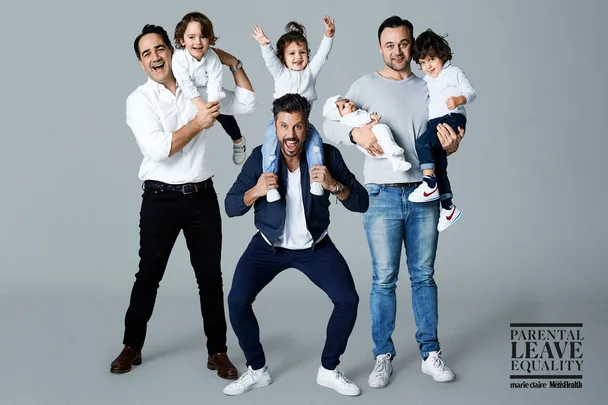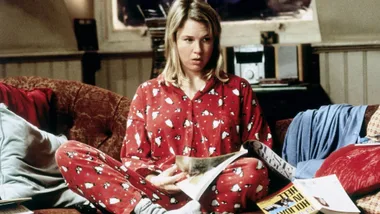This is an excerpt from the September issue of marie claire Australia, available August 1.
Clementine and Tom were thrilled to be expecting their first child. Both worked at large law firms with generous Paid Parental Leave (PPL) policies, so the couple mapped out how they would manage the adjustment to a family of three. Clementine would take six months off, Tom would take three months and then they’d each work four days and arrange childcare. Clementine’s bosses approved her request for six months’ parental leave on the spot. Yet when Tom told his male boss he wanted to take three months PPL, it was a different story. “We have that policy, but no dads have actually used it,” he was told. “It wouldn’t be good for your career.” Tom was shocked. “The policy existed but the expectation was clearly that mums take time off and effectively deal with the babies while men keep on working,” he says.
For many Australian families, the male breadwinner paradigm remains dominant, even in 2019. “The use of parental leave by fathers and male partners in Australia is very low by global standards,” CEO of Parents at Work Emma Walsh says. “We lag [behind] the [rest of the] world on PPL. Not only was Australia one of the last countries to introduce a policy, but we currently offer one of the least generous schemes.”
Only 5% of dads take paid parental leave
In the UK, parents receive 39 weeks of full-time pay from the government; in Canada, it’s 35 weeks. In Australia, “primary” carers are entitled to 18 weeks’ pay (minimum wage) while “secondary” carers get two weeks of “Dad and Partner Pay.” Only one in 20 dads take primary parental leave according to the Australian Bureau of Statistics, while a Human Rights Commission study revealed 85 per cent of Australian fathers and partners took less than four weeks’ leave on their baby’s arrival.
Walsh says dividing the roles of parents into “primary” and “secondary”, as Australia does, is emblematic of an outdated approach that reinforces the ‘breadwinner/homemaker’ gender divide. Because the government-funded Dad and Partner Pay is limited to two weeks, Walsh says fathers often have to rely on their employers to pay for additional time off. “But most employers provide limited parental leave for secondary carers and, as a result, Australian dads often don’t have time off when their baby is born, or a minimal amount if they do,” she explains.
75% of dads want to take additional leave

Even when dads do have access to paid primary carer’s leave, uptake is low. “It’s where the cultural and social stigmas come in – ‘it’s a woman’s job to care for the kids,’” Walsh says. The outcome? Mothers are literally left holding the baby.
Men want to be more involved in the lives of their children. In 2014, three in four dads surveyed said they would have liked to take additional leave, with money the reason over half didn’t. This matches global research that indicates paid leave for fathers is critical to redistribute caring between men and women. Sweden is a case in point, where men now take 25 per cent of all paid parental leave. A decade ago, their government began an “equality-promoting” PPL policy, in which working parents are offered 480 days of parental leave per child, which can be shared between mums and dads, but with each parent entitled to at least three months on a use-it or- lose-it basis.
RELATED: Why Parental Leave In Australia Needs To Change To Include Fathers
Australia doesn’t have a nationally legislated approach to encourage ‘shared care’ but Walsh hopes we’re on the cusp of change. “Parental leave equality is now on many employers’ radars and this could mean we’re about to see a significant leap forward,” she explains. Recently, Baker McKenzie, QBE, Deloitte, Spotify, Medibank and L’Oréal have all announced changes to their PPL policies, aimed at making leave more accessible, generous and inclusive for parents – not just mums.
A year after becoming a dad, Tom was promoted to partner at his law firm. Before their second child was born, he used his seniority to insist on extended leave. “It’s far from perfect, but I hope because of my example, other men and women in the firm know it’s acceptable for dads to take parental leave too.”
Join Our Campaign #PledgeForPaternityLeave
Sam Wood, personal trainer
Father of Eve, stepdaughter, 14, and Willow, 22 months (pictured)

“One of my closest mates is a very successful architect, and he recently took six months of paternity leave supported by his workplace. By his own admission, it was the best six months of his life – he said it was brilliant for his relationship with his kids, but also with his wife. He said there was nothing but upside.
“That really resonated with me. I’ve got a new baby coming very soon, so this time around I’m going to try to take off as much time as I can. I’m fortunate that my life is kind of my job and my job is my life. I’m sort of always ‘on’ with my 28 by Sam Wood Program, but I don’t necessarily need to be in an office nine-to-five. I appreciated that more than ever during those early stages after Willow’s birth. And I absolutely want to embrace that again. I would really encourage any dad to take off as much time as possible. You and your partner really do need each other – and there’s nowhere else that you’d want to be.”
RELATED: Why Everyone Loses When Dads Don’t Take Paternity Leave
TAKE ACTION
To improve workplace gender equality, we need to advocate for PPL that encourages dads to take time off. What you can do:
1. Know your rights and ask your employer what leave is available. Men are often eligible for more than they realise.
2. Expectant dads should raise the topic of extended paternity leave with their employer as early as possible, and explain the necessity of taking extra time.
3. Know the stats – men only take up 2 per cent of extended parental leave in Australia, which impacts bonding with their new baby and has longer-term impacts on the child’s wellbeing and family dynamics.
4. Ask your employer to join APLEN – a network of organisations pushing to advocate and advance parental leave equality in Australia; www.aplen.com.au.
5. Lobby your local MP to have parental leave reform placed on the agenda.










